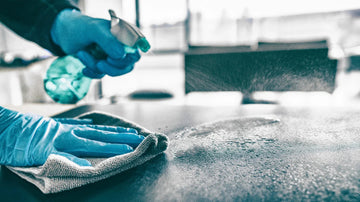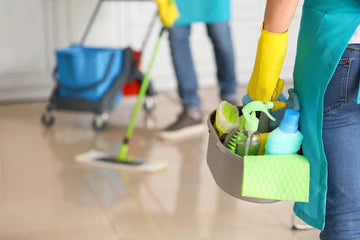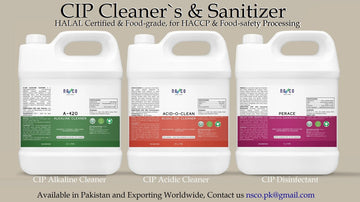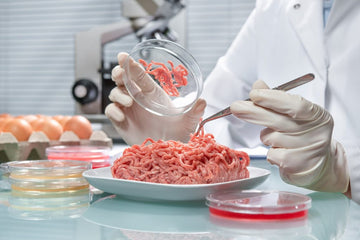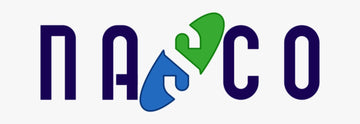Cost Optimization of Cleaning & Hygiene Chemicals without Compromising on PRPs
Cost Optimization Framework for Cleaning & Hygiene
1. Chemicals & Consumables
Area – Standard Practice – Cost Optimization Opportunity – Checklist
-
Cleaning chemicals – Multiple specialized chemicals → Switch to multi-purpose cleaners/disinfectants where safe → ☐ Evaluate overlap in chemical use
-
Dilution – Manual mixing (overdosing risk) → Install dilution control system → ☐ Calibrate dispensers quarterly
-
Supply – Buying ready-to-use (RTU) → Purchase concentrates → ☐ Train staff on dilution ratios
-
Supplier – Multiple vendors → Negotiate with 1–2 approved vendors for bulk pricing → ☐ Annual supplier review
-
Consumables – Cotton mops & disposable wipes → Use microfiber cloths/mops (less chemical & water use) → ☐ Replace worn microfiber timely
2. Labor & Training
-
Cleaning time – Manual scrubbing → Use CIP, foamers, scrubbers → ☐ Compare labor vs machine ROI
-
Staff errors – Re-cleaning due to poor training → Refresher training every 3–6 months → ☐ Track rework cases
-
Cross-use tools – Wrong tools in wrong zones → Color-coded tools system → ☐ Audit weekly compliance
-
Organization – Tools scattered → 5S methodology in sanitation room → ☐ Audit monthly
3. Water & Energy
-
Rinsing – Excessive water use → High-pressure low-flow nozzles → ☐ Install flow meters
-
Hot water – Always used → Use ambient chemical cleaners when possible → ☐ Map where hot water is essential
-
Reuse – Full fresh water each cycle → Reuse rinse water for pre-wash → ☐ Test microbial load before reuse
-
CIP cycles – Long, multiple rinses → Optimize CIP validation → ☐ Review CIP program quarterly
4. Process Standardization
-
SOPs – Generic cleaning steps → Task-specific SOPs to avoid double work → ☐ Review SOPs annually
-
Monitoring – Paper checklists → Digital checklists (QR codes, apps) → ☐ Monthly compliance reporting
-
Equipment – Wait until dirty → Preventive maintenance → ☐ Record in maintenance log
-
Zones – Same intensity everywhere → Apply zonal cleaning (critical vs non-critical) → ☐ Verify with HACCP risk assessment
5. Inventory & Procurement
-
Stock control – Overstocking (expiry risk) → Just-in-time ordering → ☐ Check expiry monthly
-
Purchases – Individual orders → Annual contracts for better rates → ☐ Track cost per unit quarterly
-
Brands – Global brand dependency → Private-label / house brands → ☐ Compare TDS & SDS equivalence
6. Compliance & Risk Management
-
Audits – React to non-compliance → Internal pre-audits → ☐ Schedule quarterly
-
Recordkeeping – Manual & scattered → Digital logs → ☐ Train staff to use system
-
Product recalls – Expensive & brand damaging → Invest in preventive hygiene → ☐ HACCP validation yearly
KPIs to Track Cost & Hygiene Balance
-
Water use per cleaning cycle (liters/kg product)
-
Chemical cost per kg product
-
Labor hours per sanitation cycle
-
% rework cleaning tasks
-
Audit compliance score (%)
-
Annual savings vs baseline year
With this checklist, you’ll be able to pinpoint leaks in cost (chemicals, water, labor, inventory) while maintaining audit-ready hygiene standards.
CLEANING & HYGIENE COST OPTIMIZATION CHECKLIST
(HACCP & Food Safety Environment)
1. Chemicals & Consumables
☐ Use multi-purpose cleaners/disinfectants where possible.
☐ Install and maintain dilution control systems to prevent overdosing.
☐ Purchase chemicals in concentrated form instead of ready-to-use.
☐ Negotiate long-term contracts with 1–2 approved vendors.
☐ Replace cotton mops/disposables with microfiber cloths and mops.
☐ Review chemical usage reports monthly.
2. Labor & Training
☐ Use CIP (Clean-in-Place), foamers, or mechanical scrubbers where applicable.
☐ Conduct refresher sanitation training every 3–6 months.
☐ Implement a color-coded tool system for different zones.
☐ Organize cleaning tools using 5S (Sort, Set, Shine, Standardize, Sustain).
☐ Track cases of re-cleaning due to poor execution.
3. Water & Energy
☐ Install high-pressure, low-flow nozzles to reduce water usage.
☐ Use ambient-temperature chemical cleaners when hot water is not essential.
☐ Reuse rinse water for pre-wash steps where safe.
☐ Review CIP programs quarterly to shorten unnecessary rinse cycles.
☐ Monitor water and energy consumption monthly.
4. Process Standardization
☐ Prepare SOPs specific to each cleaning task/zone.
☐ Implement digital checklists or QR-based monitoring logs.
☐ Schedule preventive maintenance to avoid emergency deep cleans.
☐ Apply zonal cleaning intensity (critical, semi-critical, non-critical areas).
☐ Review and update SOPs annually.
5. Inventory & Procurement
☐ Adopt just-in-time ordering to reduce stock expiry risk.
☐ Consolidate chemical and consumable purchases into annual contracts.
☐ Compare global brand vs private-label chemical options (check SDS & TDS).
☐ Check all stock for expiry dates monthly.
☐ Track chemical cost per kg of product quarterly.
6. Compliance & Risk Management
☐ Conduct internal hygiene audits quarterly before external audits.
☐ Maintain all cleaning and sanitation records digitally.
☐ Validate HACCP cleaning and disinfection steps yearly.
☐ Maintain preventive hygiene to avoid costly recalls.
☐ Document corrective actions for all non-compliances.
7. KPI Tracking (Key Performance Indicators)
☐ Water use per cleaning cycle (liters/kg product).
☐ Chemical cost per kg of product produced.
☐ Labor hours per sanitation cycle.
☐ % of rework cleaning tasks.
☐ Audit compliance score (%).
☐ Annual savings vs baseline year.
Instruction for Supervisors:
-
Tick each box (☑) once the item is verified or completed.
-
Review the checklist weekly and report any high-cost or high-risk areas.
-
Submit KPI data monthly to management for cost–hygiene balance review.
CLEANING & HYGIENE COST OPTIMIZATION CHECKLIST
(HACCP & Food Safety Environment)
Company Name/Logo: _______________________
Department: _______________________________
Date: _______________________
Supervisor: _______________________________
1. Chemicals & Consumables
| Item | Best Practice | Status (☑/✗) | Remarks |
|---|---|---|---|
| Use multi-purpose cleaners/disinfectants | Reduce SKU & overlap | ||
| Install dilution control system | Avoid over/under dosing | ||
| Buy concentrates instead of RTU | Lower logistics & storage | ||
| Negotiate contracts with 1–2 suppliers | Secure bulk pricing | ||
| Switch to microfiber cloths/mops | Reduce water & chemical usage | ||
| Review monthly chemical usage | Monitor trends |
2. Labor & Training
| Item | Best Practice | Status (☑/✗) | Remarks |
|---|---|---|---|
| Use CIP/foamers/mechanical scrubbers | Save labor time | ||
| Conduct refresher training (3–6 months) | Reduce rework | ||
| Color-coded tools by zones | Avoid cross-contamination | ||
| Organize cleaning tools (5S system) | Save time & reduce losses | ||
| Track re-cleaning cases | Identify inefficiencies |
3. Water & Energy
| Item | Best Practice | Status (☑/✗) | Remarks |
|---|---|---|---|
| Install high-pressure, low-flow nozzles | Reduce water wastage | ||
| Use ambient chemical cleaners where possible | Cut heating costs | ||
| Reuse rinse water for pre-wash | Safe resource management | ||
| Optimize CIP cycles | Reduce water & energy | ||
| Monitor monthly consumption | KPI tracking |
4. Process Standardization
| Item | Best Practice | Status (☑/✗) | Remarks |
|---|---|---|---|
| Prepare SOPs for each cleaning task/zone | Reduce duplication | ||
| Implement digital checklists/logs | Easy monitoring | ||
| Schedule preventive maintenance | Avoid emergency cleaning | ||
| Apply zonal cleaning (critical vs non-critical) | Focus resources | ||
| Review SOPs annually | Stay audit-ready |
5. Inventory & Procurement
| Item | Best Practice | Status (☑/✗) | Remarks |
|---|---|---|---|
| Adopt just-in-time ordering | Reduce expiry risk | ||
| Consolidate purchases into annual contracts | Lower cost | ||
| Compare global vs private-label chemicals | Ensure equivalence | ||
| Check expiry dates monthly | Prevent waste | ||
| Track cost/kg product quarterly | Monitor budget |
6. Compliance & Risk Management
| Item | Best Practice | Status (☑/✗) | Remarks |
|---|---|---|---|
| Conduct internal audits quarterly | Identify issues early | ||
| Maintain digital sanitation records | Improve traceability | ||
| Validate HACCP cleaning yearly | Ensure compliance | ||
| Focus on preventive hygiene | Reduce recall risks | ||
| Document corrective actions | Strengthen audits |
7. KPI Tracking
| KPI | Target | Actual | Variance | Remarks |
|---|---|---|---|---|
| Water use per cleaning cycle (L/kg product) | ______ | ______ | ______ | |
| Chemical cost per kg product | ______ | ______ | ______ | |
| Labor hours per sanitation cycle | ______ | ______ | ______ | |
| % Rework cleaning tasks | ______ | ______ | ______ | |
| Audit compliance score (%) | ______ | ______ | ______ | |
| Annual savings vs baseline year | ______ | ______ | ______ |
Instructions for Supervisors:
-
Tick (☑) each item once verified.
-
Record KPI data monthly and compare with targets.
-
Escalate any high-cost or non-compliance issues to management immediately.
DAILY/WEEKLY CLEANING & HYGIENE CHECKLIST
(Cost Optimization – HACCP & Food Safety Environment)
Date: ____________ Shift: ____________ Supervisor: ____________
1. Chemicals & Consumables
| Item | Check (☑/✗) | Remarks |
|---|---|---|
| Correct dilution used (no overuse/underuse) | ||
| Only approved chemicals used | ||
| Microfiber cloths/mops used |
2. Labor & Tools
| Item | Check (☑/✗) | Remarks |
|---|---|---|
| Color-coded tools used in correct zones | ||
| Cleaning tools stored properly after use | ||
| No re-cleaning required due to mistakes |
3. Water & Energy
| Item | Check (☑/✗) | Remarks |
|---|---|---|
| High-pressure nozzle used (no excess water) | ||
| Hot water used only where necessary | ||
| CIP/foam cleaning done as per SOP |
4. Process & Hygiene
| Item | Check (☑/✗) | Remarks |
|---|---|---|
| All areas cleaned as per SOP (critical first) | ||
| Preventive maintenance issues reported | ||
| No cross-contamination observed |
✅ 5. Compliance & Records
| Item | Check (☑/✗) | Remarks |
|---|---|---|
| Checklist signed off (digital/paper) | ||
| Any non-compliance corrected | ||
| Supervisor informed of shortages/issues |
Quick KPI Check
| KPI | Yes/No | Remarks |
|---|---|---|
| Chemicals overused? | ||
| Water wastage observed? | ||
| Cleaning rework required? | ||
| Hygiene compliance met? |
Staff Signature: _____________________ Supervisor Signature: _____________________
CLEANING & HYGIENE Chemicals (HALAL-Certified & FOOD-Grade)
For Local & and Global Export Inquiries, Reach Out to Us

